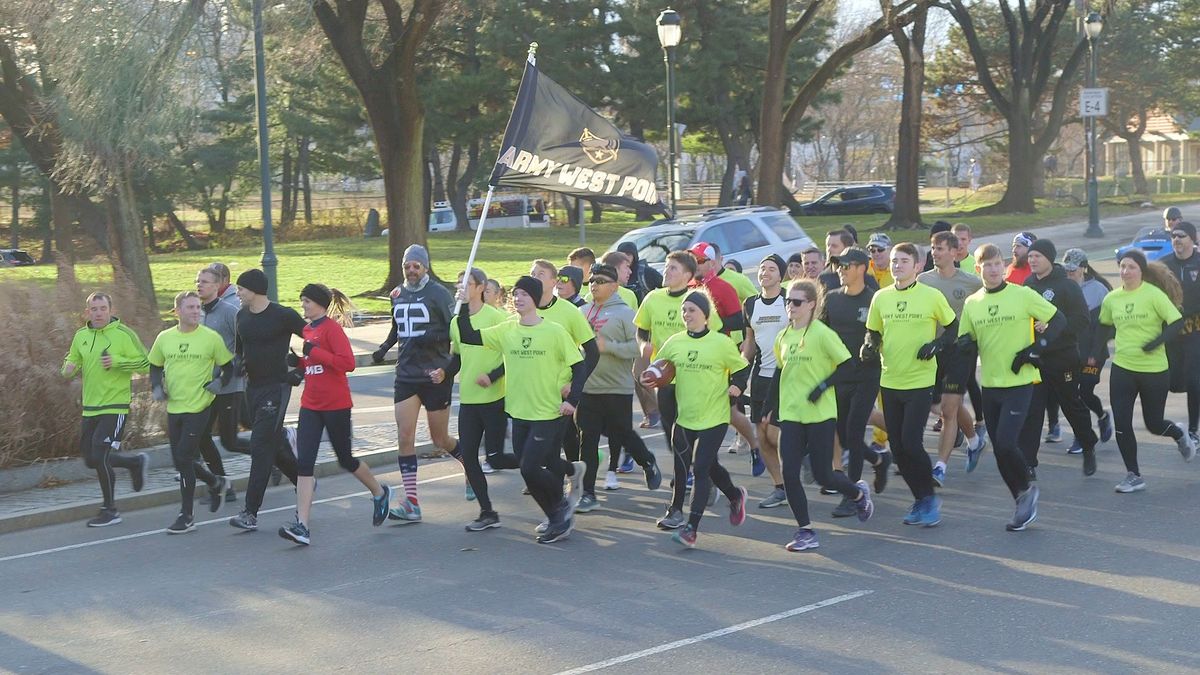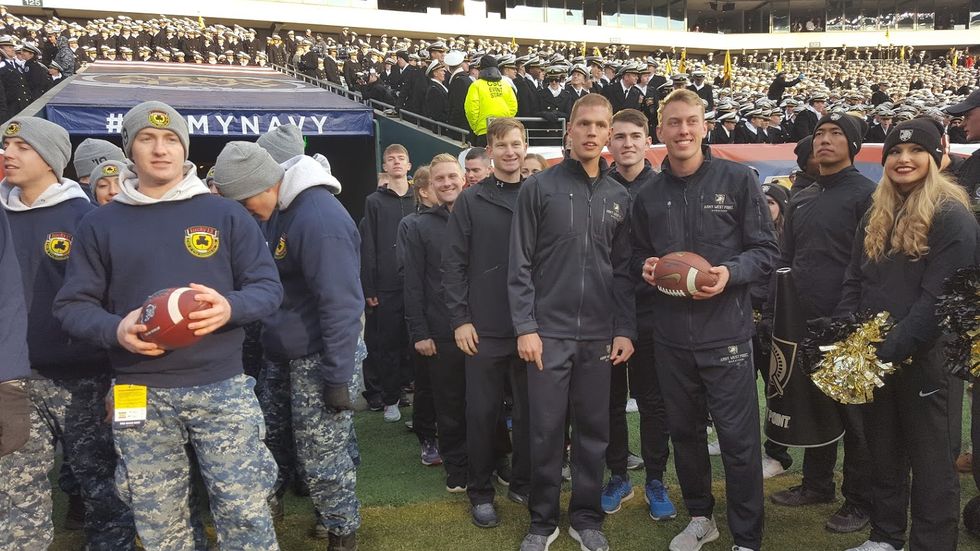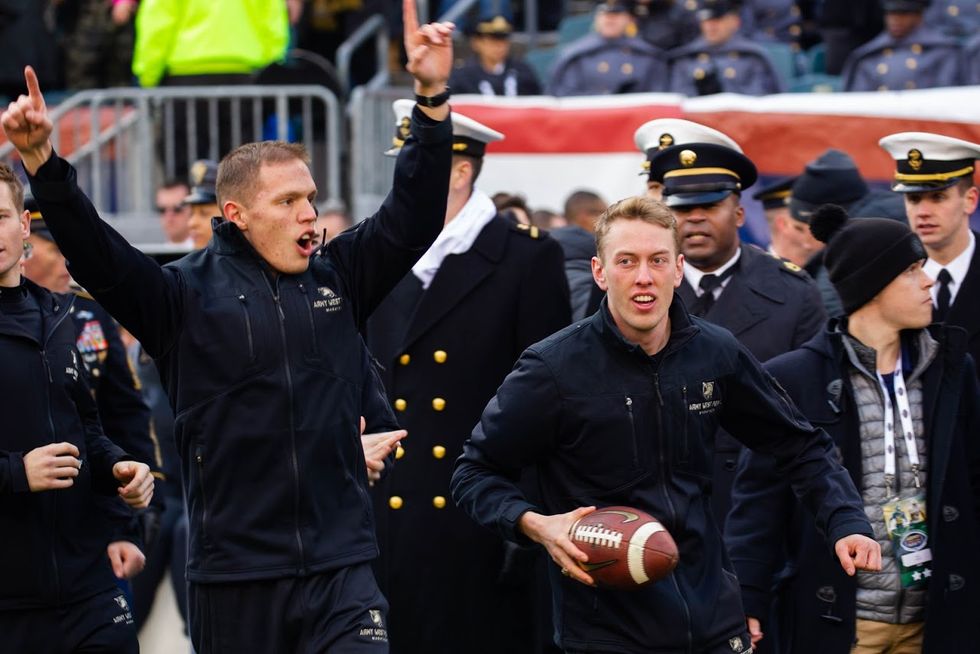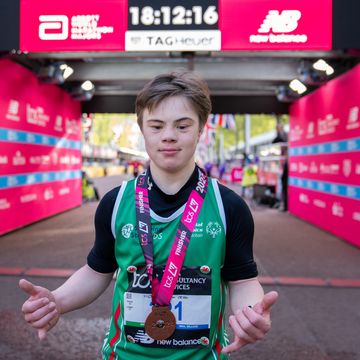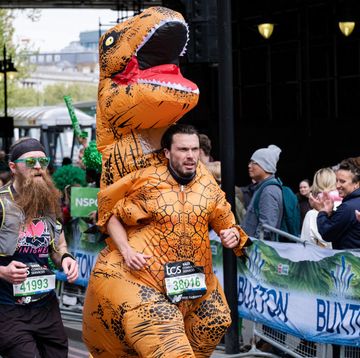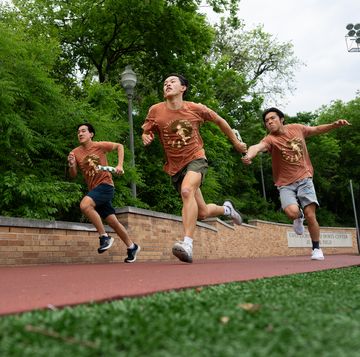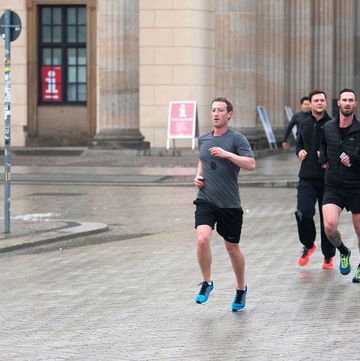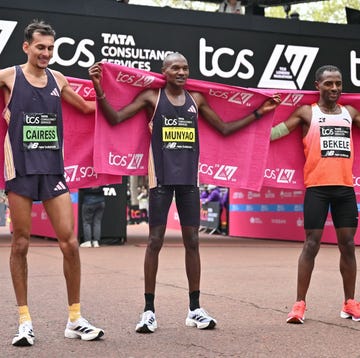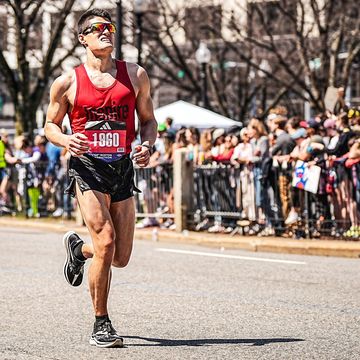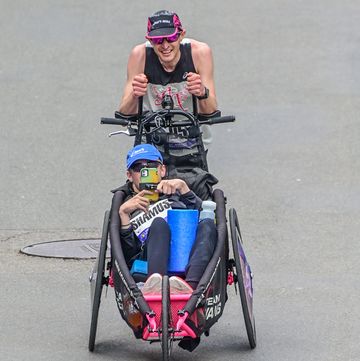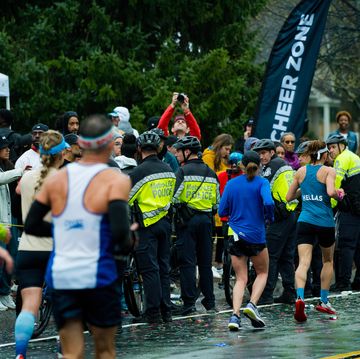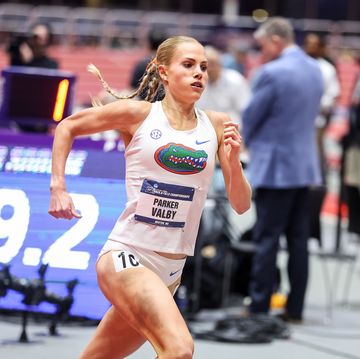Clad in neon shirts, the Army marathon team took off from the famous steps of the Philadelphia Museum of Art around 3 p.m. on December 7. Having already trekked 150 miles from West Point, New York, the team had only five miles left before the mission was completed.
In their possession was precious cargo that they held since they had set out from campus around 5 p.m. the night before. By foot, the group of cadets had relayed the cargo to Philadelphia on the annual mission they call the “Game Ball Run.”
The cargo? A football.
While the football game is the centerpiece of the weekend—which showcases one of the greatest rivalries in college sports between the Naval Academy and United States Military Academy—the “Game Ball Run” is another draw. It is, after all, each school’s duty to bring the game ball to the field.
“We’re both going off into different services and we’re fighting on the same team, but for this week, it’s a bitter rivalry,” said Dan Whitfield, a senior cadet at the U.S. Military Academy. “It’s roughly 270,000 yards of rushing for just the Army Marathon team to start the game off.”
The tradition started in 1982 with Naval Academy’s “unlucky” 13th Company as a way to bring the group together. All 150 members of the group relayed the ball the first year, and the tradition has since continued. Now, their 130-mile journey is broken up into 13 legs and split up between all 150 members.
For Army, the tradition, which started in 1994, is slightly different. In this academy’s case, it is the school’s 16-person marathon team that relays the ball each year. They run through the night and through the morning in three shifts, ending at rough 2:15 p.m. when the entire team meets at the Museum of Art.
That is when a first year cadet—a Plebe—has the honor of running up famous Rocky steps with the ball before the final five miles begins.
“Plebes have a hard first few months at school, so they give a few things like this to brighten it up a little bit,” said Kyle Stacks, the Plebe who ran the ball up the steps this year. “I’m still getting used to the traditions. Every second this week, I’ve learned something new about it all, and it’s just really cool to be a part of something that goes back as far as something like this with as much emotion and being part of something bigger than yourself, just like the Army.”
From there, the team is escorted by the Philadelphia Police Department, Philadelphia Fire Department, and Warriors’ Watch Riders through the city with fans cheering on the sidewalk, taking pictures, and supporting those who serve the country. Even local alumni from both schools joined in on the tradition.
Philadelphia isn’t the only town that gives these runners a warm welcome. Over the 156-mile journey—roughly 270,000 rushing yards—from West Point, the team received cheers and ovations from towns in New York, New Jersey, and Pennsylvania. Though the night runners don’t see much, the third leg—known as the glory leg—sees much support from many communities along the route.
“When we went through Mahwah, New Jersey, it was the coolest thing,” Whitfield said. “They had the entire fire department out, huge American flag across the road, just real small-town America, everyone was out there. They were like do you need any food or need any water. Really we just needed the bathroom, but it was a good stop there. It’s really awesome to see the support.”
For the Army team, paces varied throughout the run, with some going as fast as 5:40 pace. Carrying a football, though, added a slight challenge to their stride—but also adds another element of preparation for when they officially join the Army.
“Your arm gets kind of sore even though it’s not a heavy piece of equipment, but carrying a ball for 13.1 miles is way different than just free running,” said Kate Sanborn, a cadet in her third year who ran a 2:43 at the Richmond Marathon this fall. “The toughest part is really the grit of pushing through the night. Especially our midnight runners who run until 8 a.m. and pop caffeine pills. That’s something you will have to experience in the Big Army, so staying up all night and making sure everyone stays awake and is pumped [is helpful preparation]. That’s what’s cool about this experience.”
[Smash your goals with a Runner’s World Training Plan, designed for any speed and any distance.]
After resting for the night, both relay teams delivered the game balls side-by-side just before kickoff.
“This is so much more than a football game,” said Ryan French, a third year cadet. “It’s really a celebration of both the Naval Academy and Military Academy at West Point, so really, you’re representing so many people as well giving thanks to thousands and millions of other veterans that have served.”
Army ended up defeating Navy 17-10 in the game.

Drew covers a variety of subjects for Runner’s World and Bicycling, and he specializes in writing and editing human interest pieces while also covering health, wellness, gear, and fitness for the brand. His work has previously been published in Men’s Health.
